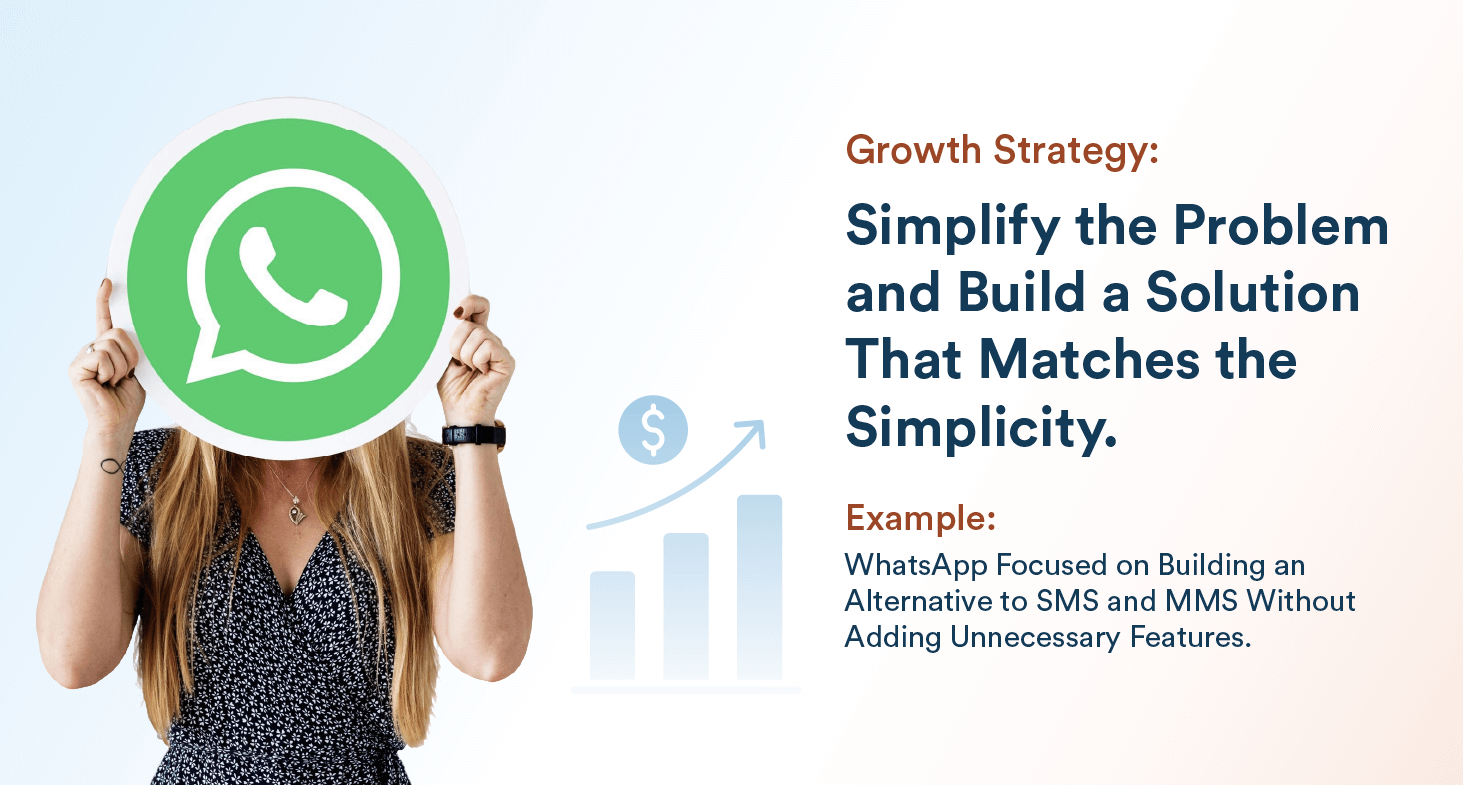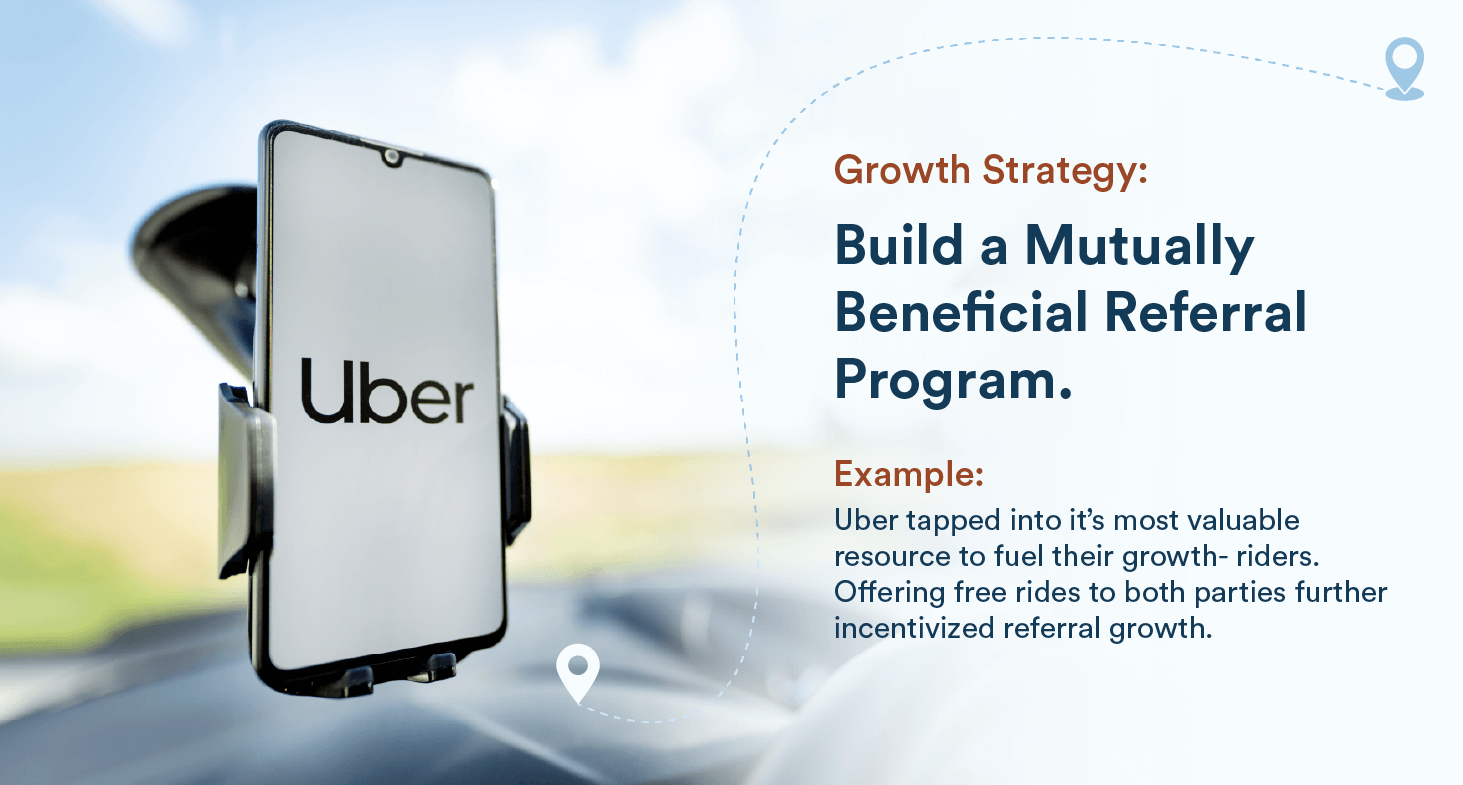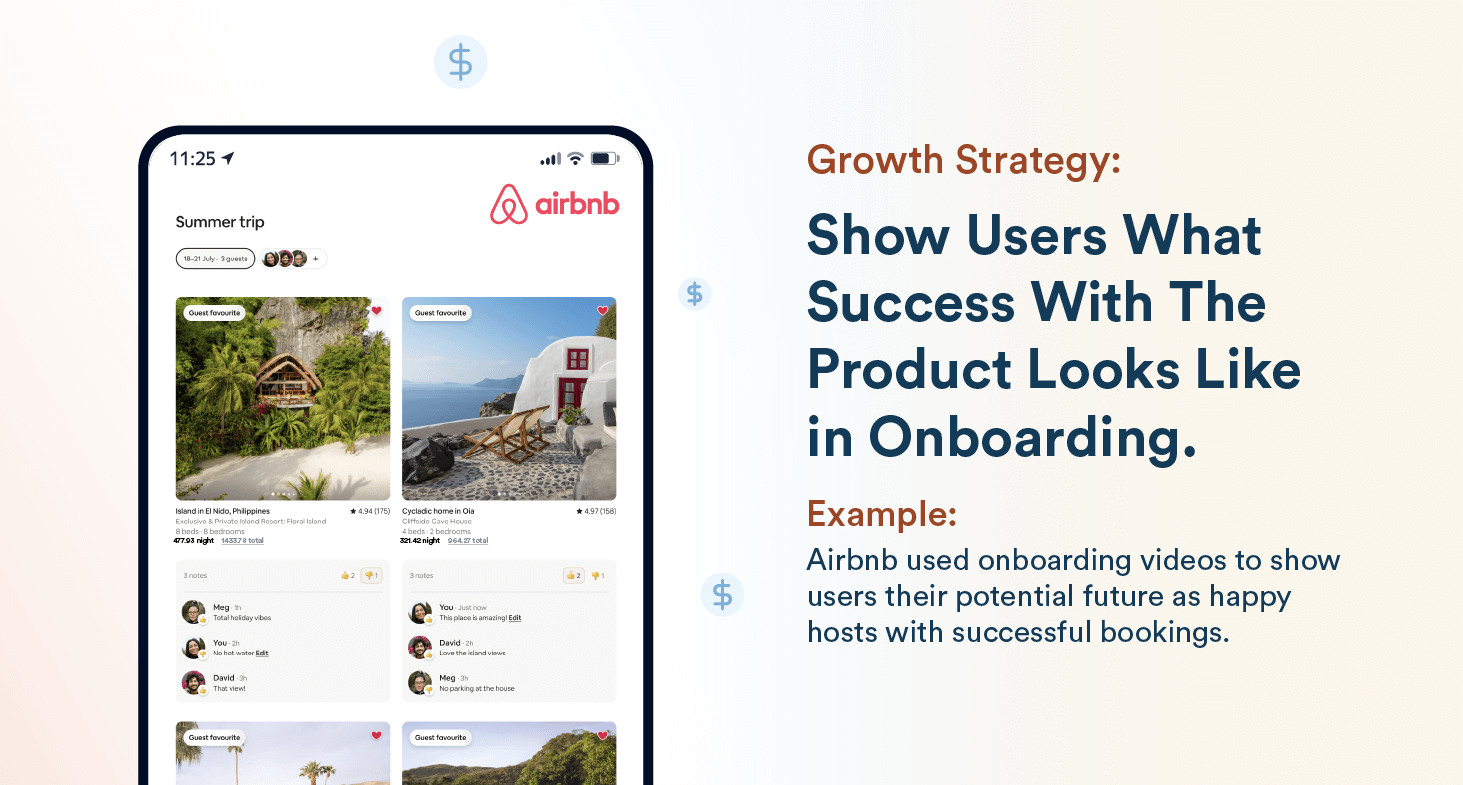To thrive in today’s fiercely competitive app market, you need a plan that draws users in and keeps them coming back for more. In this blog, we’ll outline strategies that help top apps turn new users into long-term, loyal fans.
The mobile app world can feel like a professional sport sometimes: the teams with the strongest players, best coaches, and fanciest training facilities (offices) are always on the podium, right?
These features would be nothing without an effective game plan, though — or, for mobile apps, a growth strategy. If you have the best resources at hand but don’t know how to use them effectively, you’re not taking home the gold medals.
This is where a growth strategy comes into play. In fact, it’s often the key to your mobile app’s success.
Growth Strategy Defined
A growth strategy is your plan for the long haul, not just an idea to garner a few quick downloads.
It factors in all facets of your business, from marketing and design to engineering, product, and beyond. It’s not just a set of guidelines for success, though: it’s the mindset of your company that will help grow your business over time.1
There’s no magic formula to achieve overall growth, but having a strong team, product, and desire to move forward, paired with that common mindset, will define your growth strategy.

Growth Strategy vs. Growth Hacking
If your growth strategy is the overall plan that can take years to unfold, growth hacking is an initial strategy that can jumpstart growth, but it’s not always sustainable. Just because growth hacks are one-off in nature doesn’t mean they can’t support the cause.
Growth hacking is a tool for experimentation across your company to find the most efficient routes to business growth. Constantly tinker, throw things at the wall, and see what sticks — you may end up with a one-time success or a tool for repeatable, sustained growth.
For example, it’s great for initial customer acquisition but not always conducive to long-term growth and retention. Food delivery apps often offer free meals or discounts just to get people to sign up, but that’s not sustainable once you have several thousand users.
Mobile App Growth Strategy Fundamentals
So, with 8.93 million apps in the world, how do we go about crafting an effective growth strategy in such a crowded market?2 We start by recognizing that every touchpoint matters. These foundational points will help set your app up for maximal growth while also ensuring a great UX for your users at every stage of their journey:
- User Onboarding: The Critical First Experience
User onboarding is your app’s first opportunity to impress. A lackluster onboarding experience can result in users abandoning your app right away, with studies showing that 25% of users abandon apps after just one use.3 To prevent this, onboarding should be simple, straightforward, and focused on the app’s value proposition. Providing interactive tutorials and highlighting key features within the first session can boost retention rates. Apps with smooth onboarding experiences see up to 50% higher user retention rates.4
- App Store Optimization (ASO): Standing Out in the Crowded Market
App Store Optimization is crucial for discoverability. 70% of app store visitors use search to discover new apps, and 65% of downloads come directly from a search result.5 To improve your app’s visibility, optimize app titles, descriptions, and keywords. Visuals also matter—apps with high-quality screenshots and engaging videos can boost conversion rates by up to 30%.6 Regularly update your app store listing to reflect new features or updates and encourage user reviews to improve your ranking further.
- Retention Over Acquisition: Focusing on Long-term Engagement
Attracting new users is important, but retention is where true growth happens. It costs five times more to acquire a new customer than to retain an existing one, and improving retention by just 5% can increase profits by 25-95%.7 To focus on retention, use personalized content and push notifications, provide value through regular updates, and foster community through loyalty programs. Keeping users engaged over time will drive more sustainable growth than focusing solely on new downloads.
- Find the Sweet Spot with your Push Notifications
Push notifications are a powerful tool for keeping users engaged—if done right. 68% of users have enabled push notifications for their apps, and personalized notifications can increase engagement rates by 4X.8 However, frequency and timing are key; oversending notifications can lead to 60% of users disabling them.9 Push notifications should be relevant, personalized, and well-timed to provide value without overwhelming users.
- Monetization Strategies: Finding the Right Model
Choosing the right monetization model is essential for long-term revenue. Subscription-based models are becoming increasingly popular, with in-app subscriptions generating $13.8 billion in revenue in 2023.10 Freemium models, which allow free access to basic features and charge for premium content, have been particularly effective in driving conversions. Experiment with a mix of in-app purchases, ads, and subscriptions to find the best model for your audience.
- Leveraging Social Proof and Influencer Marketing
Social proof is a powerful psychological tool that influences users to trust your app. 92% of consumers trust recommendations from peers over advertising.11 User-generated content, reviews, and testimonials provide credibility and encourage downloads. In addition, influencer marketing has become a key growth driver. 49% of consumers rely on influencer recommendations to make purchases.12 Partner with influencers who align with your brand to expand your reach and build trust within targeted communities.
- Security and Data Privacy: Building User Trust
In an age where data breaches are common, ensuring security and privacy is vital. 87% of consumers say they won’t do business with brands if they have concerns about their security practices.13 Compliance with regulations like GDPR and CCPA is mandatory, but building trust goes beyond that. Be transparent with users about what data you collect and why. Use encryption, secure payment methods, and let users control their privacy settings. Ensuring data security and privacy avoids legal issues and fosters trust, which improves retention.
- AI and Machine Learning: Hyper-Personalizing the User Journey
Artificial Intelligence (AI) and machine learning allow you to hyper-personalize user experiences. AI can predict user behavior and recommend personalized content, leading to higher engagement. Consumers expect specialized treatment for being loyal customers, and AI allows you to deliver just that. Machine learning can analyze user behavior to send the right push notification or email at the optimal time, improving engagement and conversion rates.
- Omnichannel Engagement: Reaching Users Across Platforms
Omnichannel engagement is about creating a seamless user experience across multiple channels—mobile, email, social media, and more. According to research, companies with omnichannel strategies retain 89% of their customers, compared to 33% for those without.14 Integrating communication across platforms ensures that users have a consistent experience no matter where they interact with your brand. The key is ensuring your messaging is consistent and tailored for each platform’s audience.
10 Growth Strategies From Real-World Examples
Now that we’ve covered the fundamentals, it’s time to see how successful mobile app growth strategies play out in the real world.
1. WhatsApp: Simple Innovation That Works
WhatsApp’s simple innovation has kept them relevant: they provide a cross-platform communications tool as an alternative to SMS and MMS. WhatsApp provides a lucrative alternative in a world where wireless providers often charge per message.16
These days, messaging platforms are more than just for talking: many promote games, stickers, GIFs, shopping tools, and who knows what else. WhatsApp stands apart, though. Their focus has always been on rock-solid core functionality with a simple, user-friendly model—any expansion has been directly aligned with those core tenets.
Don’t be afraid of simplicity. New developments that distract from the core purpose of an app may intrigue some users, but the likelihood of driving others away is too much of a risk. WhatsApp nails it when it comes to methodical expansion and practical tools — cut the fancy bells and whistles if they don’t serve your main purpose.

2. Netflix: Cut Out The Download
Slow and steady wins the race — even when it comes to acquiring over 130 million subscribers across 190 countries. Netflix has methodically executed their expansion, with a focus on working with markets and forging relationships to facilitate growth.
They’ve applied that methodical nature to their app growth. As one of the many apps constantly vying for user attention, they approach it in a unique way. Why not make it easier for users to experience Netflix on their mobile devices?
The company partnered with Verizon to preload their app on Android phones, cutting out the hassle of downloading.17 New Android phone owners have the opportunity to sign in with their existing Netflix account, become a subscribers, or just delete the app altogether. Hopefully, it’s one of the first two.
It’s a growth strategy that eliminates an initial roadblock many apps face: getting people to hit the download button.
3. Uber: Referrals for Growth
The benefits of well-executed referral programs are widely known. Uber is the referral program champion because it’s tapped into its most valuable resource—its riders—to fuel growth.
Frequent riders have the opportunity to give new users a free ride in exchange for a free ride themselves.18 While it may seem pricey on Uber’s end — acquiring a new customer is typically more expensive than keeping one in the boat — ensuring the loyalty of regular customers locks in their commitment.
In a highly competitive transportation market with numerous options available, Uber’s referral program is a win-win scenario. It opens the door for new customers while cementing existing customer relationships. It’s a growth hack for new users as well as a growth strategy for nurturing user engagement. 4. Spotify: Well-crafted Exclusivity
4. Spotify: Well-crafted Exclusivity
Since Spotify launched in 2008, they’ve been on top of the music streaming game. They owe their growth to methodical expansion, research and development, artist and user growth, and a little bit of exclusivity. An invite-only launch helped them regulate high demand and keep potential users wanting more.
With 36 offices serving 64 markets worldwide, Spotify has invested in its foundational elements to support overall growth. Such a broad reach makes customer engagement a breeze, and they continue to capitalize on two features that have made them irresistible: exclusivity and staying one step ahead.19
A strong foundation allows Spotify to capitalize on the ever-changing music industry. Rivals TIDAL and Apple Music are gunning for a piece of the action, but neither has taken the top spot yet. Original content, curated playlists, and partnerships with major artists for Spotify-only projects keep users engaged and coming back for more.
One thing’s for sure: Spotify filled the music streaming market gap but made sure to establish their roots early on for effective growth, thus paving the way for their more exclusive and innovative tactics.
5. Bumble: Don’t Be a One-trick Pony
Bumble is the mobile dating app that turns common romantic norms on their heads: women are required to make the first move, which goes against what every romantic comedy has ever told you about dating. However, the app does more than just find your next romance — it can help you find your perfect business partner.
Nearly three years after the app’s initial launch, Bumble Bizz was born of not all users using the app for its intended purpose. Some were putting their work experience in their biographies and intentionally connecting with others who did the same instead of seeking love.
Bumble decided to meet this need with the official launch of Bumble Bizz in October 2017. Using the same technology as the dating side of the app, Bizz has expanded Bumble’s reach exponentially. As of August 2018, Bumble had grown to 36 million registered users, with 64,000 new Bizz users joining daily.20
Thinking outside the box from the start and meeting the needs of the market have helped Bumble grow into one of the most well-known names in the app world.

6. Lyft: Driven by Community
When it comes to measuring mobile app prosperity, it makes sense that quantity usually trumps quality. More downloads = more success.
Not for Lyft.
While they have fewer overall downloads than Uber, their user engagement is higher because of the community they’ve built.21 They’re proof that a brand’s commitment to their customers bolsters receiving that commitment in return.
Lyft has established mission-based values that focus on community building, environmental awareness, and social engagement. Lyft prioritizes caring about its drivers, riders, the environment, and social activism. This attentiveness attracts users yearning for something more.
Building a brand around values may not get you the top spot in terms of downloads, but it’s a surefire way to attract users who will stick around for the same reasons your brand will hold steady. Build for quality, not quantity, and the quality is sure to outweigh any loss of quantity.
7. Airbnb: Showcasing Success from the Start
The attention span of mobile app users is shrinking exponentially, so you must act fast to prevent them from jumping overboard as quickly as they boarded.
The same goes for onboarding new users. If they hop on your app and receive little to no direction on how to get started, you’re essentially escorting them out the door yourself.
A great example of onboarding that shows users what success looks like is Airbnb, especially when it comes to onboarding new hosts. Airbnb doesn’t just teach hosts how to use the platform; it inspires them to see the potential success they can have by showcasing real-world examples. Through personalized onboarding videos featuring CEO Brian Chesky, Airbnb connects emotionally with new hosts, sharing stories of how the platform started and how easy it is to become a successful host today. This human approach helps make hosting feel approachable and achievable from the outset, motivating users to complete their onboarding and begin listing their property.
By showing new users what success looks like—through real-life examples and personal storytelling—Airbnb keeps the onboarding process focused on the end result: successful bookings and happy hosts. This strategy helps minimize drop-off rates during onboarding and encourages long-term engagement by demonstrating immediate value. It’s an excellent model for any app aiming to motivate users by painting a picture of success early in their journey.

8. Slack: Give the People What They Want
From day one, Slack has met the needs of its public, giving them efficient, easy-to-use technology for internal workplace communication.
How their value increased from $0 to $4 billion in just four years is a thing of wonder in the app world. It’s one of the purest examples of growth based on product need and delivery of an easy-to-use platform — with little to no major marketing campaigns (virality and word of mouth really got them to the top).22
They present a scalable remedy to internal communication roadblocks faced by companies of all sizes. Whether your team has 12 or 12,000 employees, Slack can be organized and adapted to your business communication needs.
It is important to keep your audience in mind, but looking beyond to see how everyone can become your audience is a great growth tactic. A simple, easy-to-use, and customizable platform is often better than a fancy new thing that only a small part of the market can use.
Plus, it doesn’t hurt to have animated GIF capabilities to enliven even the driest of office correspondence.
9. Pinterest: Let The Machines Work For You
Pinterest is the go-to content-sharing tool for topics ranging from home design and outfit inspiration to travel and technology–not to mention killing time during boring meetings.
The massive amount of content presents a challenge: how do you get what users want to their screens without losing them?
Pinterest has improved their search engine over time to be smarter and more precise, but their Lens tool helps take mobile app users to the next level. Introduced in early 2017, Lens is a visual search tool that takes a picture to find visually and aesthetically similar images.
After its first year, Pinterest Lens user engagement increased to 600 million searches every month, a 140% year-over-year increase.23 Lens is a testament to what a fresh take on technology can do for your growth strategy.

10. Canva: Listen and Cater to Your Users
Canva is a graphic design tool for people who aren’t graphic designers.
Its user-friendly tools and interface give power to the user in a notoriously non-user-friendly world — graphic design is difficult, expensive, and not that easy to just jump into. Launched in 2014 after the success of its web interface, the Canva iPad app took its stellar experience mobile.
Canva’s advanced but uncomplicated features, attention to customer feedback, and frequent updates keep users coming back. Separate design tutorials are pillars of this exceptionally user-oriented tool.24
One thing’s for sure: in a world where things like fast fashion and quick fixes compromise quality for convenience, Canva does the opposite — and it’s their golden ticket to growth.
Some Final Common Sense Tips
While there’s no perfect formula for creating a successful growth strategy, keep these tips in mind as you move forward:
- Don’t be afraid of growth hacks. Try new things! They may keep boosting your growth and become part of your overall growth strategy.
- It’s okay to be a little exclusive. A little exclusivity can keep the desire for your app high, which can ultimately translate into growth.
- Simplicity isn’t bad. There will always be apps for games, fancy new technology, and whatever else is new-fangled and fun. Reliability, ease of use, and a rock-solid foundation are better tools for a successful growth strategy.
- If it ain’t broke, don’t fix it — work with it. Understand where you can work with a new market and forge solid relationships. Stomping in with a plan to conquer all is rarely sustainable.
- Listen, then listen some more. Your users will tell you what they want and need. Tap into this—create a symbiotic relationship and fuel your growth and customer loyalty.
- Is your product going to be useful in 5 years? It’s nearly impossible to predict the future — we’re not telling you to try. Keep the purpose of your product and its overall value top of mind: a fast-rising trend now will likely be gone in a few years, if not sooner.
- Be malleable. What worked then may not work now or next year. If your game plan stagnates, be open to changing it.
Grow, Baby, Grow!
There’s no secret sauce for the perfect growth strategy. Remember the market, your audience(s), technology, and product needs. With these front and center, you’re much better off when it comes to developing a growth strategy.
Take our mobile growth quiz to determine how your tactics stack up to industry best practices. Contact us to learn how CleverTap can help you develop your growth strategy and launch you into a world of successful app bliss.

See how today’s top brands use CleverTap to drive long-term growth and retention
Subharun Mukherjee 
Heads Cross-Functional Marketing.Expert in SaaS Product Marketing, CX & GTM strategies.
Free Customer Engagement Guides
Join our newsletter for actionable tips and proven strategies to grow your business and engage your customers.







